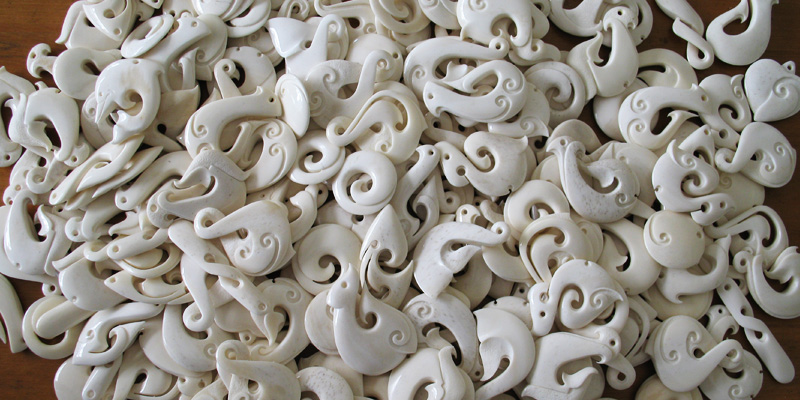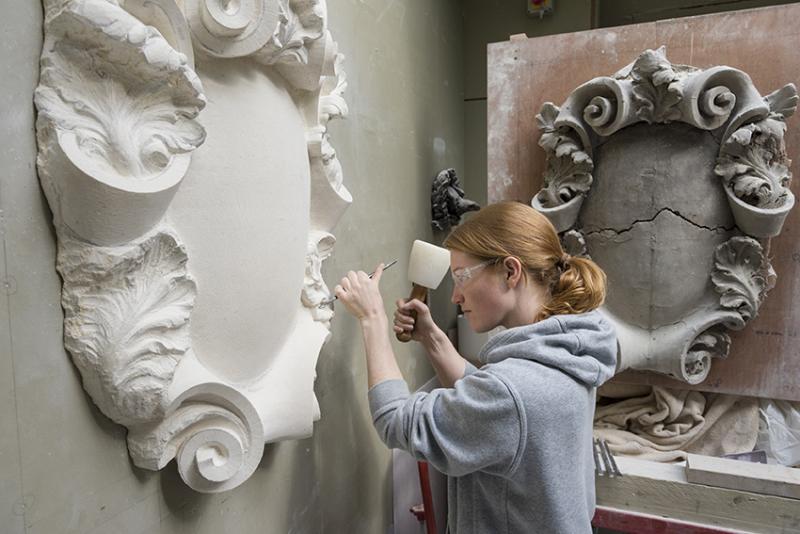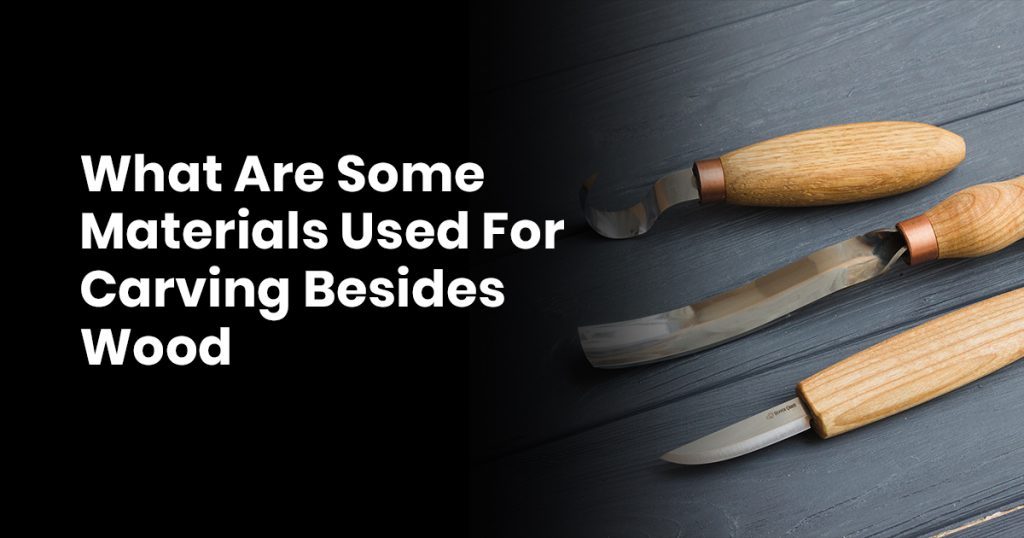Wood carving is an age-old skill that was once used to curb boredom, but now, we’re seeing people make fantastic creations and intricate works of art like never before.
But wood isn’t the only thing you can carve into your unique masterpiece.
There are other materials that can aid you in making something that wood just wouldn’t work with.
For some, you can use your wood carving tools, for others you’ll need something a little stronger.
These carving materials have their own properties, and with a bit of background in wood carving, you’ll quickly adapt to the resistance and time required to make something extravagant out of these.
Contents
Bone

It sounds a bit ominous when you type in “Bone carving,” but you do get a good amount of positive results.
Bone carving refers to animal skulls, bones, and if you get creative, you can even use fish skeletons.
Bone carving isn’t unlike wood carving. Bone is harder to carve out, but undergoes a similar process with pneumatic tools and a whittling knife.
If you or someone you know is a hunter, elk and whitetail deer bones would keep you in fresh supply for quite some time.
Bone carving doesn’t really whip up a lot of dust, even when using electric tools, so you won’t require too many pieces of equipment to get started.
Stone

Now this is going to make you feel very Da Vinci.
Stone carving, whether it’s marble, limestone or granite, will require a lot of tools to get started, and a ton of patience.
It can take quite some time to get this in the exact shape you want.
Harder, less porous stones will take a lot more out of you, but the reward is a piece that can last for hundreds of years, as we’ve seen in museums.
Equipment required includes a respirator, full mobility protective gloves, and as much clothing as you can put on. Goggles, shop vacs and air purifiers are also recommended.
Since we have pneumatic tools we can use, it will whip up a lot of dust. To get the smooth effect that resembles work of the renaissance, you’ll want to use electric tools.
You can use your chisels to begin breaking down the block into a basic geometric shape, but finishing tools or detail tools will also be required.
Shreds of stone can be as sharp as a stainless steel blade or glass. If you pursue this, just ensure you have the proper precautionary procedures in place.
Ice

You may have seen ice sculptures at wintertime festivals, brandished by a person with a chainsaw as they tame the crowd with their skills.
Well, that’s not what we’re doing here.
You can use normal wood carving tools to shave and chip away at ice. It’s seasonal, but it’s basically free materials and practice created by nature.
You can even use your tools to chisel and extract ice from local frozen water sources. This would take a bit more effort, but it’s not impossible to extract your own.
Ice requires tempering. This can be done with a blow torch (if you want to add some flair to it), or simply leaving it out at room temperature until the ice begins to sweat.
An ideal temperature range to carve ice is 18-20° F, so when it starts climbing out of this range, you may need to refreeze it. If you’re working outside in the frigid cold with it, you’ll just need to temper it with heat every 10-12 minutes to keep it at the ideal temperature.
Ice carving is difficult because it’s harder to understand if the subtle changes you made to the material were effective or not, but it’s a ton of fun to do.
ABS Plastics

Plastic isn’t anyone’s first choice, but it’s an option.
You know why it’s great for alternative carving? It’s everywhere.
ABS plastic is used in keyboards, phone cases, and especially LEGO bricks in children’s toys.
You can’t easily recycle ABS plastic; it has a ton of peculiarities if you try to remold it or reshape it—unless you have a whittling knife.
You can source this from just about anywhere. ABS plastic has two good bonuses when it comes to carving; it’s malleable enough to respond well to your carving tools, and you can paint it.
It doesn’t matter what the carving is. You can use multiple pieces of ABS to create a collage of sorts, glue it all together, and paint it in place.
Find disposed or underutilized items and put them to good use. Maybe you want to work with stone or ice one day; this is how you get started.
The thing about ABS plastic is that it’s the cheapest way to start carving right now. You need your tools, and some imagination on where to source it from, and you’re ready to rock and roll.
As a word of caution, don’t try to heat ABS plastic when trying to reshape it during your carving process. At just over 220° F, it begins to burn and smoke.
Vegetables

Well, you won’t want to put these up on the shelf and keep them for years, but it’s excellent practice.
The thing is, you’ll have to use either perfectly ripe vegetables or those that were picked too soon. This lets the results contour to your exact carvings, so the vegetable won’t sag or rot while you’re finishing it up.
Carving vegetables is an entirely different experience. You can generally feel multiple types of woods and find the mass similarities between different ones, but with vegetables, it’s always a different experience.
This is what makes it so good to use as practice before upgrading to other materials.
Fibrous vegetables such as acorn squash, carrots, and even pumpkins (whether you want to call them a fruit or a vegetables is up to you) are all great for carving. Zucchini, avocados and peppers are also good.
You’ll want to avoid overly water-based vegetables, such as cucumbers. They can be good for image carving on the skin of the vegetable, but other than that, they’ll fall apart easily.
What is Thaeng Yuak?

In Thai culture, thaeng yuak is used for funerals and cultural or religious experiences.
These are short-term carvings.
Thaeng yuak uses a form of banana stalk, so much like other vegetables, you won’t be able to hold onto these carvings forever.
Because of its hard surface, banana stalk resembles working with slightly less abrasive woods. If you’ve ever carved maple wood, you’ll feel a similarity in the two.
If you’re interested in learning how to carve traditional thaeng yuak, there are unfortunately very few online materials at-the-ready to teach you.
Plan on asking local artisans how to carve it during your next visit to Thailand.
Carving is Only Limited by the Imagination
There are endless ideas that expand from these base materials—what are the most unique materials that you’ve seen carved out?
After learning what you can do by molding and chiselling the world around you, what’s stopping you?
Grab the right tool for the job, begin your practice with wood working, and prepare to make something great.
Carving in itself is an art, and while wood carving is its most common practice, it doesn’t have to end there.
Escalate from wood to harder materials, like marble and stone, and see what you can do.




